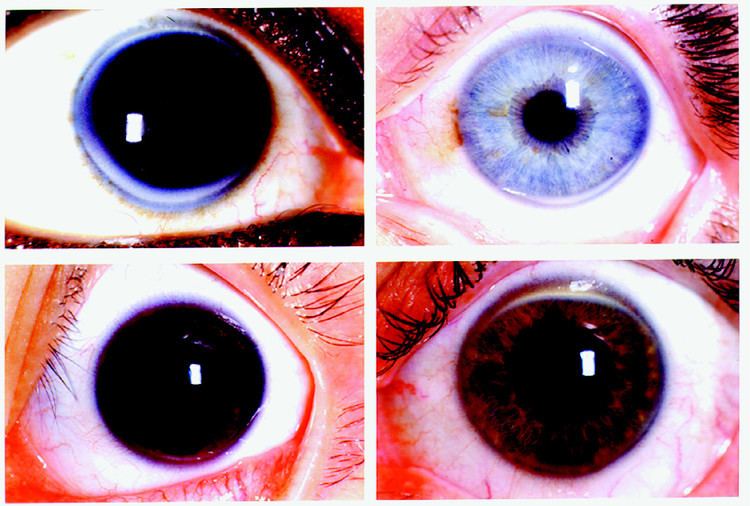Specialty ophthalmology ICD-9-CM 371.41 DiseasesDB 17120 | ICD-10 H18.4 OMIM 107800 MeSH D001112 | |
 | ||
Arcus senilis (or arcus senilis corneae) is a white, grey, or blue opaque ring in the corneal margin (peripheral corneal opacity), or white ring in front of the periphery of the iris. It is present at birth but then fades; however, it is quite commonly present in the elderly. It can also appear earlier in life as a result of hypercholesterolemia. Arcus senilis can be confused with the limbus sign, which reflects calcium rather than lipid deposits.
Contents
Alternative names
It is also called arcus adiposus, arcus juvenilis (when it occurs in younger individuals), arcus lipoides corneae or arcus cornealis; sometimes a gerontoxon.
Causes
It results from cholesterol deposits in or hyalinosis of the corneal stroma, and may be associated with ocular defects or with familial hyperlipidemia. It is common in the apparently healthy middle aged and elderly; a prospective cohort study of 12,745 Danes followed up for a mean of 22 years found that it had no clinical value as a predictor of cardiovascular disease.
It can be a sign of disturbance in lipid metabolism, an indicator of conditions such as hypercholesterolemia, hyperlipoproteinemia or hyperlipidemia.
Unilateral arcus is a sign of decreased blood flow to the unaffected eye, due to carotid artery disease or ocular hypotony.
People over the age of 60 may present with a ring-shaped, grayish-white deposit of phospholipid and cholesterol near the peripheral edge of the cornea.
Younger people with the same abnormality at the edge of the cornea would be termed arcus juvenilis.
